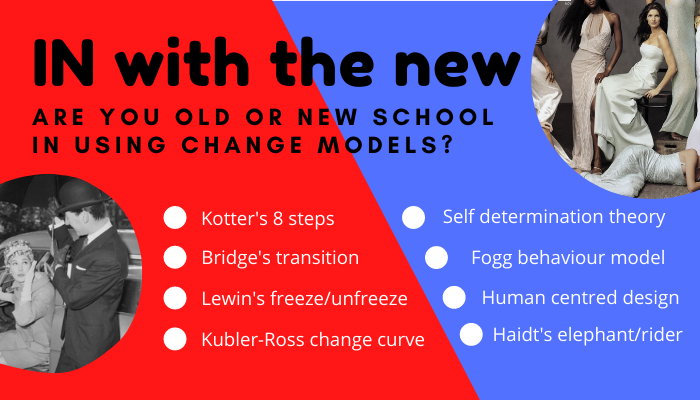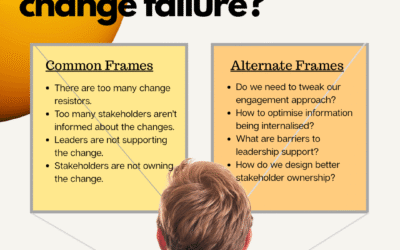A lot of popular change management models are old models, many of which have been shown by research to have limited efficacy in the business world. Never the less, some of these models are still referred to as the core ‘pillars’ of change management.
What are newer change management models that have been shown by research to have better validity? Refer to our infographic on what’s ‘in’ and what’s ‘out’. To read up more on these new models refer to our articles below:






